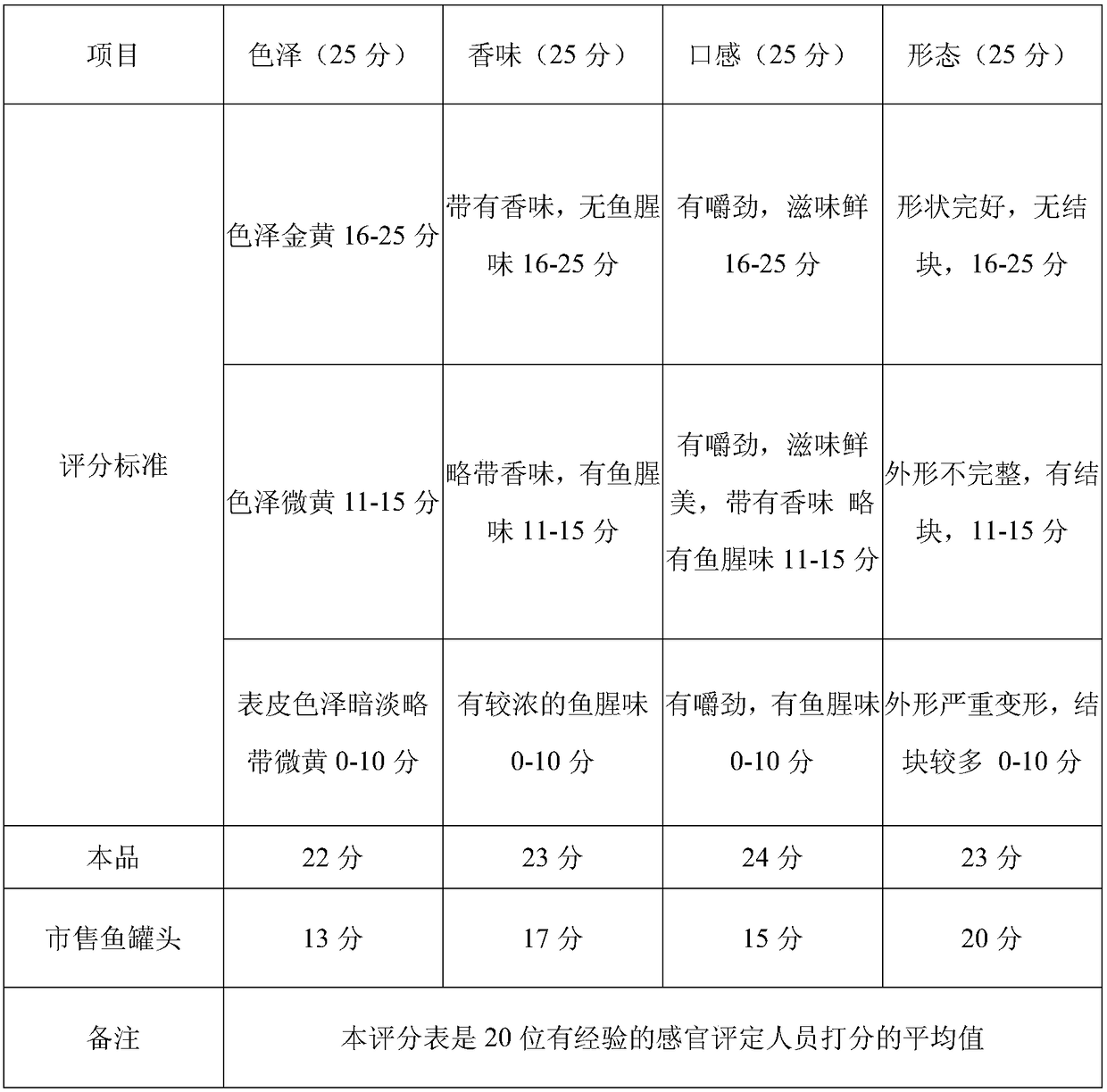Fermented canned mackerel and production method thereof
A production method and a technology for mackerel, which can be applied in the directions of food ingredients as taste improvers, functions of food ingredients, food science, etc., and can solve problems such as waste of mackerel resources.
- Summary
- Abstract
- Description
- Claims
- Application Information
AI Technical Summary
Problems solved by technology
Method used
Image
Examples
Embodiment 1
[0029] (1) Handling of mackerel: cut into fish pieces with a length of about 3-7cm and a width of about 2-4cm, and weigh the required mackerel pieces into 100 parts;
[0030] (2) pickling: take 10 parts of table salt and dissolve in 200 parts of water, place the cut mackerel pieces in 5% salt water and marinate for 1 hour, then wash for a while, and then drain;
[0031] (3) Fermentation: Inoculate the cultured Lactobacillus plantarum strain NRRL B-14768 at an inoculum size of 2% in the marinated fish in (2) and ferment at 37° C. for 12 hours;
[0032] (4) Drying: After fermentation, put it into an oven for drying at a temperature of 50°C and a drying time of 3.5 hours;
[0033] (5) softening: put the dried Spanish mackerel pieces at room temperature for about 2 hours;
[0034] (6) Fried plasticity: Add 500 parts of oil to the softened Spanish mackerel meat and fry it in an oil pan with an oil temperature of 180-200°C for 3-5 minutes, and slowly turn it to prevent the fish bod...
Embodiment 2
[0040] (1) Processing of Spanish mackerel: cut into fish pieces with a length of about 3-7cm and a width of about 2-4cm, and weigh the required pieces of Spanish mackerel into 200 parts;
[0041] (2) pickling: take 20 parts of table salt and dissolve in 400 parts of water, place the cut mackerel pieces in 5% salt water and marinate for 1 hour, then wash for a while, and then drain;
[0042] (3) Fermentation: Inoculate the cultured Lactobacillus plantarum strain NRRL B-14768 at an inoculum size of 2% in the marinated fish in (2) and ferment at 37° C. for 12 hours;
[0043] (4) Drying: put the fermented Spanish mackerel meat into an oven at a temperature of 50°C for drying, and the drying time is 3.5 hours;
[0044] (5) softening: put the dried mackerel meat at room temperature for about 2 hours;
[0045] (6) Fried plasticity: Add 800 parts of oil to the softened Spanish mackerel meat and fry it in an oil pan with an oil temperature of 180-200°C for 3-5 minutes, and turn it slo...
PUM
 Login to View More
Login to View More Abstract
Description
Claims
Application Information
 Login to View More
Login to View More - R&D
- Intellectual Property
- Life Sciences
- Materials
- Tech Scout
- Unparalleled Data Quality
- Higher Quality Content
- 60% Fewer Hallucinations
Browse by: Latest US Patents, China's latest patents, Technical Efficacy Thesaurus, Application Domain, Technology Topic, Popular Technical Reports.
© 2025 PatSnap. All rights reserved.Legal|Privacy policy|Modern Slavery Act Transparency Statement|Sitemap|About US| Contact US: help@patsnap.com



